How Tokenized Real-World Assets Are Reshaping Finance in 2025
Tokenized real-world assets are transforming finance in 2025, unlocking liquidity, transparency, and global access to traditional investments.

The financial landscape in 2025 is undergoing a seismic shift, driven by the rapid adoption of blockchain technology and the rise of tokenized real-world assets (RWAs). From real estate and commodities to fine art and intellectual property, tokenization is transforming how we invest, trade, and manage ownership. What was once a futuristic concept is now a mainstream financial innovation, unlocking liquidity, transparency, and accessibility across global markets.
In this blog, we’ll explore what tokenized RWAs are, how they work, the benefits they offer, and the challenges they face. We’ll also examine how this trend is reshaping traditional finance and what it means for investors, institutions, and regulators in 2025.
What Are Tokenized Real-World Assets?
Tokenized real-world assets are physical or traditional financial assets that have been digitized and represented as tokens on a blockchain. These tokens serve as proof of ownership or entitlement to a portion of the underlying asset. Unlike cryptocurrencies, which are native to blockchain ecosystems, RWAs are backed by tangible or off-chain assets.
Examples include:
- Real estate properties
- Gold and other commodities
- Bonds and equities
- Artwork and collectibles
- Intellectual property rights
- Carbon credits and energy assets
Each token can be programmed with smart contracts to automate compliance, dividends, or transfer of ownership, making them highly versatile and efficient.
How Tokenization Works
Tokenization involves converting rights to an asset into a digital token that can be traded on a blockchain. The process typically includes:
- Asset Identification and Valuation: The asset is appraised and verified to ensure legitimacy and accurate pricing.
- Legal Structuring Legal frameworks are established to ensure the token represents enforceable ownership or rights.
- Token Creation: A digital token is minted on a blockchain platform, often using standards like ERC-20 or ERC-721.
- Custody and Management: The physical asset is held by a trusted custodian or managed through a legal trust.
- Trading and Settlement Tokens can be traded on decentralized or regulated exchanges, with instant settlement and transparent records.
This process bridges the gap between traditional finance and decentralized technology, creating a hybrid model that combines the best of both worlds.
Benefits of Tokenized RWAs
1. Increased Liquidity
Traditionally illiquid assets, such as real estate or fine art, can be fractionalized and traded, allowing investors to buy and sell portions of an asset without requiring full ownership.
2. Fractional Ownership
Tokenization enables multiple investors to own a share of high-value assets, lowering the barrier to entry and democratizing access to wealth-building opportunities.
3. 24/7 Global Market Access
Unlike traditional markets that operate within fixed hours, tokenized assets can be traded 24/7, across borders, and without intermediaries.
4. Enhanced Transparency
Blockchain’s immutable ledger ensures that all transactions are recorded and visible, reducing fraud and improving trust among participants.
5. Automated Compliance
Smart contracts can enforce regulatory requirements, automate dividend payments, and manage voting rights, reducing administrative overhead.
6. Cost Efficiency
By eliminating middlemen and streamlining processes, tokenization reduces transaction costs and speeds up settlement times.
Real-World Applications in 2025
Tokenized real-world assets (RWAs) are no longer theoretical—they’re actively transforming how individuals and institutions interact with traditional markets. In 2025, tokenization is being applied across a wide range of industries, unlocking new efficiencies, liquidity, and accessibility.
Real Estate
Tokenized real estate platforms now allow investors to buy fractional shares in residential and commercial properties with as little as $100. This democratizes access to property ownership and opens the door to global participation.
- Rental income is distributed automatically via smart contracts, ensuring timely and transparent payments to investors.
- Secondary markets offer liquidity that was previously unavailable, allowing investors to exit positions without waiting for full property sales.
- Tokenization simplifies cross-border investment, eliminating the need for complex legal structures and intermediaries.
- Real estate developers can raise capital more efficiently by offering tokenized shares directly to retail and institutional investors.
Commodities
Gold, oil, and agricultural products are being tokenized to enable faster trading, settlement, and ownership verification. These tokens are backed by physical reserves stored in secure facilities.
- Tokenized gold can be redeemed or traded instantly, providing a digital alternative to traditional bullion investment.
- Agricultural tokens allow farmers to pre-sell harvests, improving cash flow and reducing reliance on middlemen.
- Commodity-backed tokens offer real-time price tracking and transparent supply chain data, enhancing trust and efficiency.
- Investors can diversify portfolios with fractional exposure to physical assets without the logistical burden of storage or transport.
Bonds and Equities
Governments and corporations are issuing tokenized bonds and equities that offer real-time tracking, automated coupon payments, and reduced issuance costs. These instruments are gaining traction in both public and private markets.
- Tokenized bonds enable instant settlement and reduce counterparty risk, improving liquidity for fixed-income investors.
- Smart contracts automate interest payments and maturity redemptions, streamlining back-office operations.
- Private companies can raise capital through tokenized equity offerings, bypassing traditional IPO processes.
- Investors gain access to previously illiquid markets, such as venture capital and private equity, through fractional ownership.
Art and Collectibles
Platforms like Masterworks and Particle are tokenizing fine art and rare collectibles, enabling investors to own fractional shares of iconic pieces. Blockchain technology ensures provenance and authenticity.
- Tokenization solves long-standing issues in the art market, such as forgery and opaque pricing.
- Investors can trade art tokens on secondary markets, unlocking liquidity in an otherwise static asset class.
- Museums and galleries can raise funds by offering fractional ownership while retaining physical custody of the artwork.
- Collectibles such as vintage cars, rare wines, and sports memorabilia are also being tokenized, expanding the scope of alternative investments.
Intellectual Property
Musicians, authors, and creators are using tokenization to monetize royalties, licensing rights, and future revenue streams. This model empowers creators and connects them directly with their audiences.
- Fans can invest in creative works and earn a share of future revenue, fostering deeper engagement and financial support.
- Smart contracts automate royalty distribution, ensuring creators are paid fairly and promptly.
- Tokenized IP rights can be traded, licensed, or bundled into investment portfolios, creating new asset classes.
- Startups and independent artists can raise capital by offering tokenized shares of future earnings, bypassing traditional gatekeepers.
Challenges and Risks of Tokenized Real-World Assets in 2025
While tokenized real-world assets (RWAs) are revolutionizing finance, they are not without challenges. As adoption accelerates, investors, institutions, and regulators must navigate a complex landscape of legal, technical, and operational risks. Understanding these hurdles is essential for building trust and ensuring the long-term viability of tokenized finance.
Regulatory Uncertainty
One of the most pressing challenges in tokenized asset markets is the lack of consistent regulation across jurisdictions. Different countries define and treat tokenized assets in vastly different ways, creating confusion and compliance risks.
- In some regions, tokenized securities are treated like traditional financial instruments, requiring full regulatory oversight. In others, they fall into legal gray areas.
- Without clear guidelines, platforms and investors face uncertainty around taxation, reporting, and legal enforceability. This slows innovation and deters institutional participation.
Custody and Trust
Tokenization relies on the promise that each digital token is backed by a real-world asset. Ensuring that the underlying asset is securely held and properly managed is critical to maintaining investor confidence.
- Custodians must be transparent, licensed, and subject to regular audits to verify asset backing and prevent fraud.
- Poor custody practices can lead to disputes over ownership, loss of investor funds, and reputational damage for platforms.
Technology and Interoperability
Blockchain infrastructure must be robust, scalable, and interoperable to support widespread tokenization. However, fragmentation across networks and protocols can hinder liquidity and user experience.
- Many tokenized assets are confined to specific blockchains, limiting their accessibility and tradability across platforms.
- Without standardized protocols, integrating tokenized assets into existing financial systems becomes complex and costly.
Market Education
Tokenized finance introduces new concepts that many investors and institutions are unfamiliar with. Lack of education can lead to poor decision-making, increased risk exposure, and missed opportunities.
- Investors must understand how tokenization works, what rights tokens confer, and how to assess risk.
- Institutions need training on smart contracts, custody solutions, and regulatory compliance to safely engage with tokenized assets.
Cybersecurity
As with all digital assets, tokenized RWAs are vulnerable to cyber threats. Smart contract bugs, phishing attacks, and wallet breaches can result in significant financial losses.
- Platforms must implement rigorous security protocols, including multi-signature wallets, code audits, and real-time monitoring.
- Users should follow best practices for securing private keys, enabling two-factor authentication, and avoiding suspicious links.
The Role of Institutions and Regulators
In 2025, financial institutions are no longer sitting on the sidelines. Banks, asset managers, and exchanges are actively building infrastructure to support tokenized assets. Central banks are exploring the use of tokenized government bonds, and regulators are developing frameworks to ensure compliance and consumer protection.
Key developments include:
- Regulatory sandboxes for tokenized asset experimentation
- Licensing regimes for custodians and token issuers
- Integration of tokenized assets into traditional financial reporting
- Collaboration between blockchain startups and legacy institutions
Pakistan, for instance, is exploring tokenized sukuk (Islamic bonds) to attract foreign investment and improve transparency. The Securities and Exchange Commission of Pakistan (SECP) has launched pilot programs to test blockchain-based asset issuance.
What It Means for Investors
For retail and institutional investors alike, tokenized RWAs offer a new frontier of opportunity. They provide access to previously inaccessible markets, reduce friction in asset management, and open doors to innovative financial products.
Investors should:
- Diversify across tokenized and traditional assets
- Use regulated platforms with strong custody solutions
- Stay informed about legal and tax implications
- Evaluate the underlying asset and token structure before investing
As tokenization matures, it will become a core component of modern portfolios, blending digital efficiency with real-world value.
Final thoughts
The tokenization of real-world assets is not just a trend; it’s a transformation. By 2025, it’s clear that this innovation is reshaping finance from the ground up. As infrastructure improves, regulations evolve, and adoption grows, tokenized RWAs will redefine how we think about ownership, investment, and financial inclusion.
Whether you’re a seasoned investor, a startup founder, or a curious observer, understanding tokenization is essential to navigating the future of finance.
Date
1 month agoShare on
Related Blogs

Web3 Super Apps: The Next Generation of All-in-One Blockchain Platforms
6 hours ago

How dApps Are Disrupting Traditional App Ecosystems
2 days ago

The Impact of AI on Blockchain Fraud Detection
6 days ago

Real-World Asset (RWA) tokenization
7 days ago








